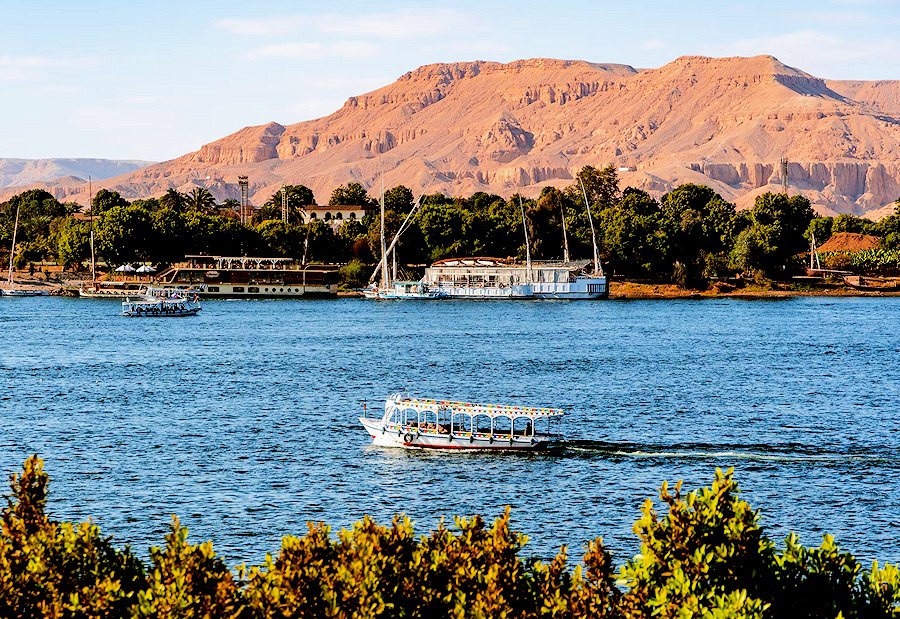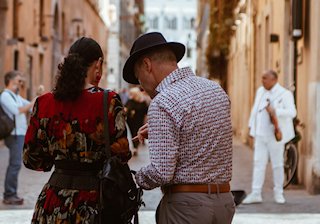Travel Notes: Destinations: Africa: Egypt - Luxor Travel Guide.
Short URL: https://tnot.es/LXR
Travel Guide For Visitors to Luxor
The Upper Egyptian city of Luxor, built upon the ancient capital of Thebes, has witnessed the rise and fall of ruling pharaohs for over 3,000 years. Share on Facebook
An Open-Air Museum
Walk amongst towering stone columns, and explore a place where every corner reveals another piece of humanity's most extraordinary civilisation.
 Add a Business -
Add a Location -
Add a Lodging - Add Travel Content
- Add URL
- Travel Services.
Add a Business -
Add a Location -
Add a Lodging - Add Travel Content
- Add URL
- Travel Services.
Visiting Luxor, On The Banks of The Nile
The Nile divides Luxor into two distinct experiences; the East Bank pulses with modern Egyptian life alongside magnificent temples, whilst the West Bank whispers ancient secrets from the Valley of the Kings.
Whether you're deciphering hieroglyphs on tomb walls or watching feluccas drift past at sunset, Luxor delivers an archaeological adventure unlike anywhere else on Earth.
When to Visit Luxor - Timing Your Egyptian Adventure
The best times to visit Luxor are from March to April and between October and November.
These brief shoulder seasons offer pleasant temperatures, small crowds, and reasonable accommodation prices.
Temperatures stay around 30°C during the day and cool down to around 20°C at night during these periods.
High Season (December-February)
Cooler weather brings European winter escapees and higher prices.
Book accommodation well in advance.
Shoulder Season (March-May, October-November)
Perfect weather meets manageable crowds.
Your best bet for comfortable sightseeing without breaking the bank.
Summer (June-September)
Southern Egypt (between Luxor and Aswan) has consistent daily highs of up to 41°C.
Brutal heat but fewer tourists and rock-bottom prices.
Early morning temple visits become essential.
Getting Around Luxor - Transport Options
Transport in Luxor varies dramatically between the East and West Banks.
East Bank
Walking works for distances between Luxor Temple and the corniche.
For longer trips to Karnak Temple, microbuses are a top choice for both locals and visitors.
These vehicles offer a speedy and convenient mode of transportation, with fixed routes and the ability to stop at any point along the way.
Taxis and tuk-tuks provide door-to-door convenience for temple hopping.
West Bank of The Nile
Cycling offers the most freedom for exploring multiple sites at your own pace.
Organised tours handle logistics efficiently, whilst private taxis allow flexible itineraries.
The ferry crossing between banks costs mere pounds and runs frequently throughout the day.
East Bank Highlights - Living History
Karnak Temple Complex
As the largest temple complex in Egypt, Karnak Temple is a must-see in Luxor.
Built and expanded over 2,000 years by generations of pharaohs, Karnak is packed with history and was dedicated to the gods of Amun, Mut, and Khonsu.
The famous Hypostyle Hall contains 134 massive columns that create a forest of ancient stone.
Visit Tips
Arrive at opening (6am) to beat crowds and harsh sunlight.
The sound and light show transforms the complex after dark, though it's rather cheesy.
Luxor Temple
The Luxor Temple was constructed in 1400 BC.
It was not created to honor any specific king but served as a shrine to the rejuvenation of kingship.
Unlike Karnak's sprawling layout, Luxor Temple feels intimate despite its grandeur.
Photography Gold
The temple illuminates beautifully at sunset, making evening visits particularly rewarding for photographers.
West Bank Wonders - The Realm of the Dead
Colossi of Memnon
Two towering statues guarding the ancient entrance to Amenhotep III's temple complex make for a brief but memorable stop.
These 18-metre giants once stood before a massive mortuary temple that has since crumbled away.
Temple of Hatshepsut
Visit the stunning Temple of Queen Hatshepsut, dedicated to Egypt's iconic female Pharaoh, notable for its unique terraces and vividly preserved artwork.
This architectural marvel cuts directly into the clifface, creating one of ancient Egypt's most striking monuments.
Valley of the Kings
This royal necropolis houses the tombs of New Kingdom pharaohs, including the world-famous burial site of Tutankhamun.
Three tombs come with your entrance ticket, with additional premium tombs requiring separate fees.
Strategy
Book Tutankhamun's tomb separately if King Tut fascination runs deep.
Otherwise, tombs like KV2 (Ramesses IV) offer spectacular paintings without the premium price.
Where to Stay in Luxor
East Bank
Convenient for restaurants, shops, and transport connections.
Hotels range from backpacker hostels near the train station to luxury Nile-view properties along the corniche.
West Bank
Quieter agricultural setting with guesthouse charm.
Perfect for cycling enthusiasts and those seeking authentic village experiences.
Tourist Map of Luxor
Use the Tourist Map of Luxor to help you decide where to stay in Luxor based on travel budget, preferred location, planned must-see attractions and local must-do activities.
Luxor Museum and Local Experiences
The often-overlooked Luxor Museum houses some of Egypt's finest artefacts in climate-controlled galleries.
Mummification Museum
The Mummification Museum provides fascinating insights into ancient Egyptian burial practices.
Tasting Local Flavours
For authentic local flavour, explore Luxor's traditional souqs in the evening when temperatures cool and locals emerge for their daily shopping.
Planning Your Luxor Itinerary
Two Days
Cover East Bank temples on Day One, then follow up with West Bank tombs and temples on Day Two.
Three Days
Add Luxor Museum, traditional market exploration, and a felucca sunset cruise on Day Three.
Four Days Plus
Consider day trips to Dendara Temple or Abydos, both magnificent sites without Luxor's crowds.
Practical Considerations
Currency
Egyptian pounds (EGP).
ATMs are widely available on the East Bank.
Dress Code
Conservative clothing shows respect at religious sites.
Shoulders and knees should remain covered.
Haggling
Expected in souqs and with taxi drivers.
Start at 30-50% of the initial asking price.
Photography
Most sites allow photography for an additional fee.
Flash photography damages ancient pigments and is prohibited in tomb interiors.
Water
Stick to bottled water.
The combination of heat and unfamiliar bacteria makes dehydration a genuine risk
Digging Below The Surface - Like a Good Archaeologist
Luxor rewards visitors who dig beyond surface-level tourism.
Take time to sit quietly in ancient courtyards, notice intricate hieroglyphic details, and imagine the countless generations who walked these same stones.
This isn't merely sightseeing; it's time travel through humanity's most remarkable civilisation.
More City Travel Guides
City Guides: Cities in Africa - Cities in America - Cities in Asia - Cities in Australasia - Cities in Latin America - European Cities and Regions.
More From Travel Notes
Travel Notes Online Guide to Travel
Africa - Asia - Caribbean - Europe - Middle East - North America - Oceania - South America.
The Travel Notes Online Guide to Travel helps visitors plan their trip with country and city travel guides, local tourist information, reviewed web sites, and inspiring travel content.
Travel and Tourism Guides on Travel Notes
 If you find Travel Notes useful, please take a moment to
like us on Facebook and share with your friends on social media.
If you find Travel Notes useful, please take a moment to
like us on Facebook and share with your friends on social media.
Share on Facebook
Travel Resources
.
Travel & Tourism With Industry Professionals.












